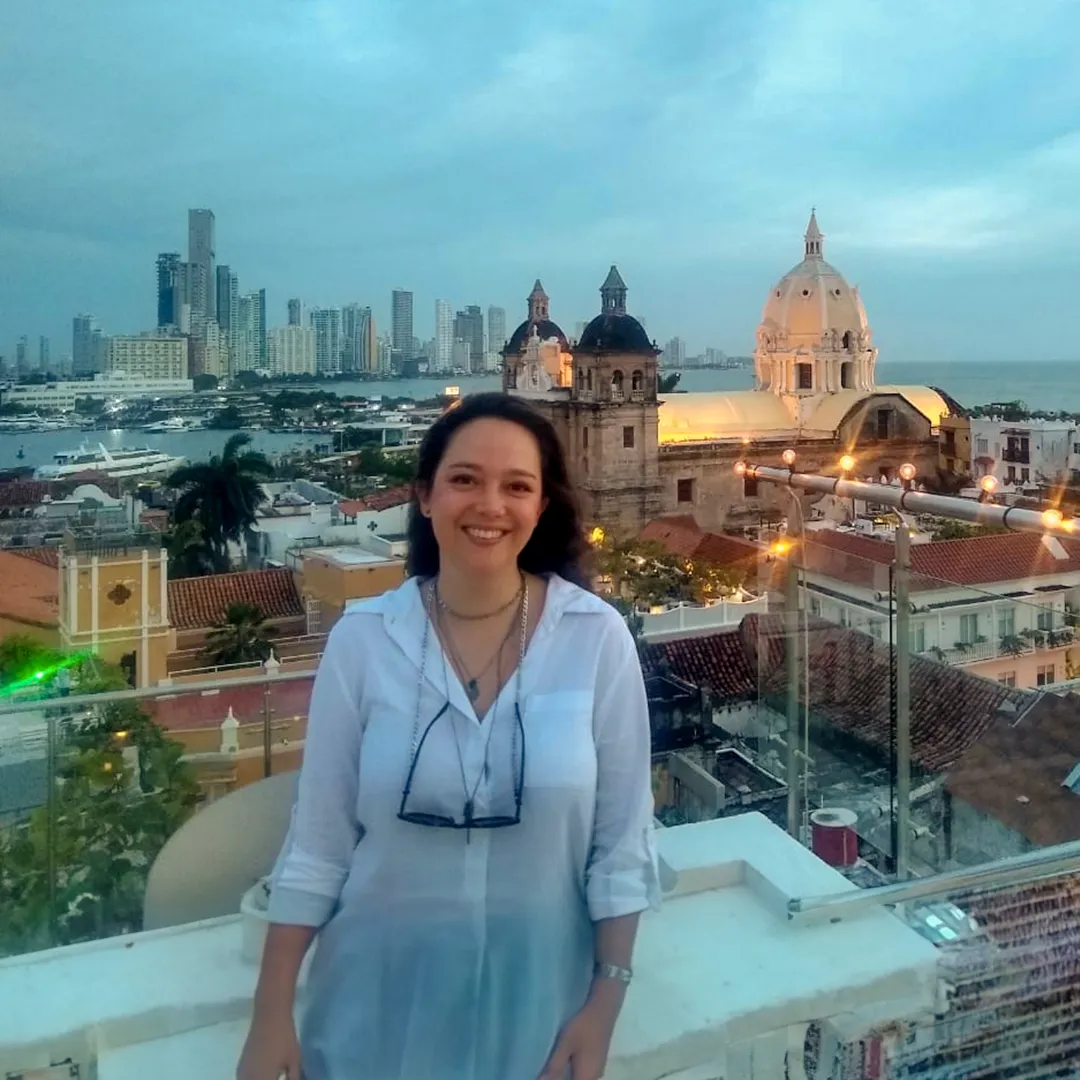A journey to Colombia is an opportunity to experience the thriving metropolises of Medellin and Bogota, the well-preserved historic quarters of Cartagena and Mompox, the natural beauty of the Sierra Nevada overlooking the Caribbean Sea and the increasingly popular Tayrona National Park, the rolling green farmlands of the world-famous Coffee Triangle, and the verdant rivers and forests that stretch into the ever-vital Amazon. From bustling cities to breathtaking landscapes, Colombia has something for every traveler. Use these Colombia travel tips to plan your dream itinerary.
In rediscovering its identity as one of South America’s most important tourist destinations, Colombia’s wealth of artists, architects, visionaries, and historians is on full display, providing rich cultural activities and immersive experiences for travelers from all over the world. The people of Colombia are warm, welcoming, attentive, graceful, and generous. As excited as they are to share their art, cuisine, music, and dance, they are equally proud of their industry and innovation, which is bringing about a bright and colorful future. This is Colombia, and it’s closer than you think!

Based on feedback from our Expert Guides, Tour Operators, and Guests, we’ve identified the following as the most noteworthy places to visit in Colombia. We highly recommend including at least one of these within your Colombia tour itinerary!
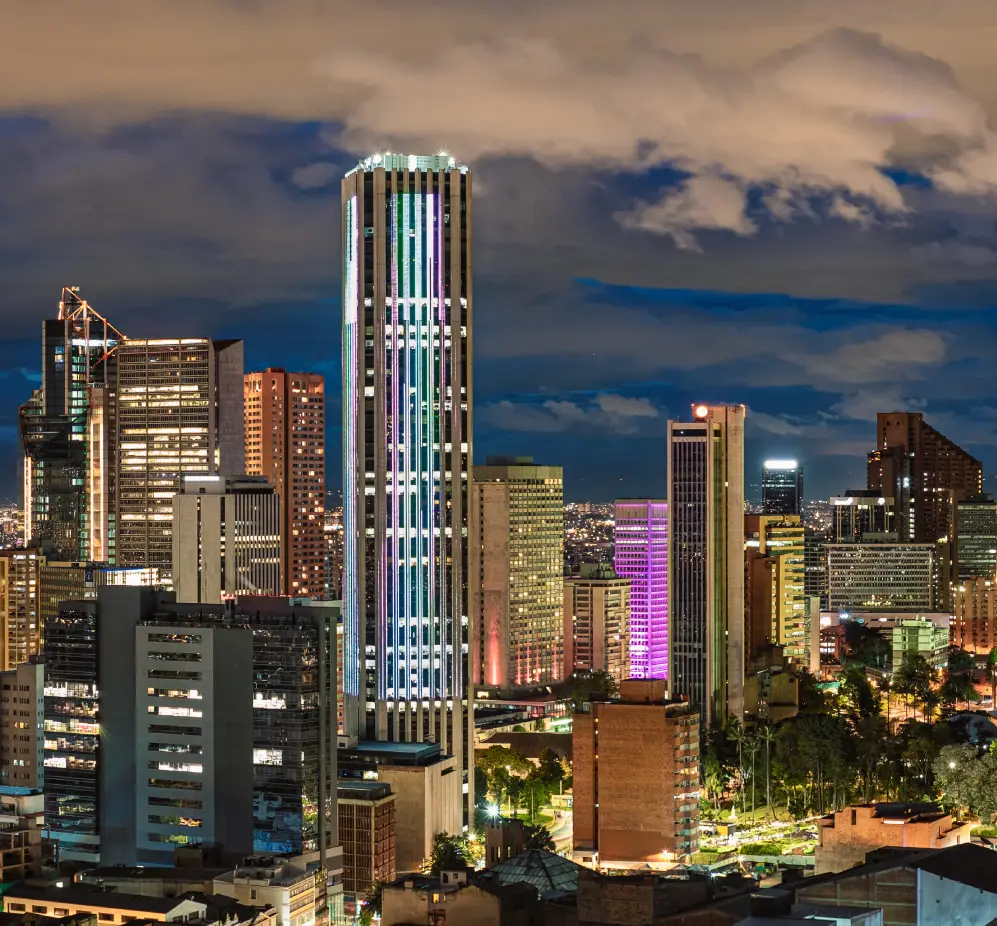
Bogota is Colombia’s capital and the place where cultures from all over the country converge in a highly diverse and metropolitan setting. To experience Bogota is to experience a bit of Colombia’s past, present, and future.
The city is host to all sorts of festivals and fairs, from music to theater to literature and more! It is known for its incredibly popular Botero and Gold Museums. There is a lot to explore here if you really want to get to know Colombia.
The vibrant transformation of Medellin is known as Colombia’s flower and fashion capital. This city has also earned its reputation as one of the most innovative cities in Latin America.
Its remarkable public transportation system (Metro) connects the city with several trains, trolleys, buses, shuttles, and cable cars. The city itself is surrounded by beautiful rolling hills, lush green valleys, and winding rivers.
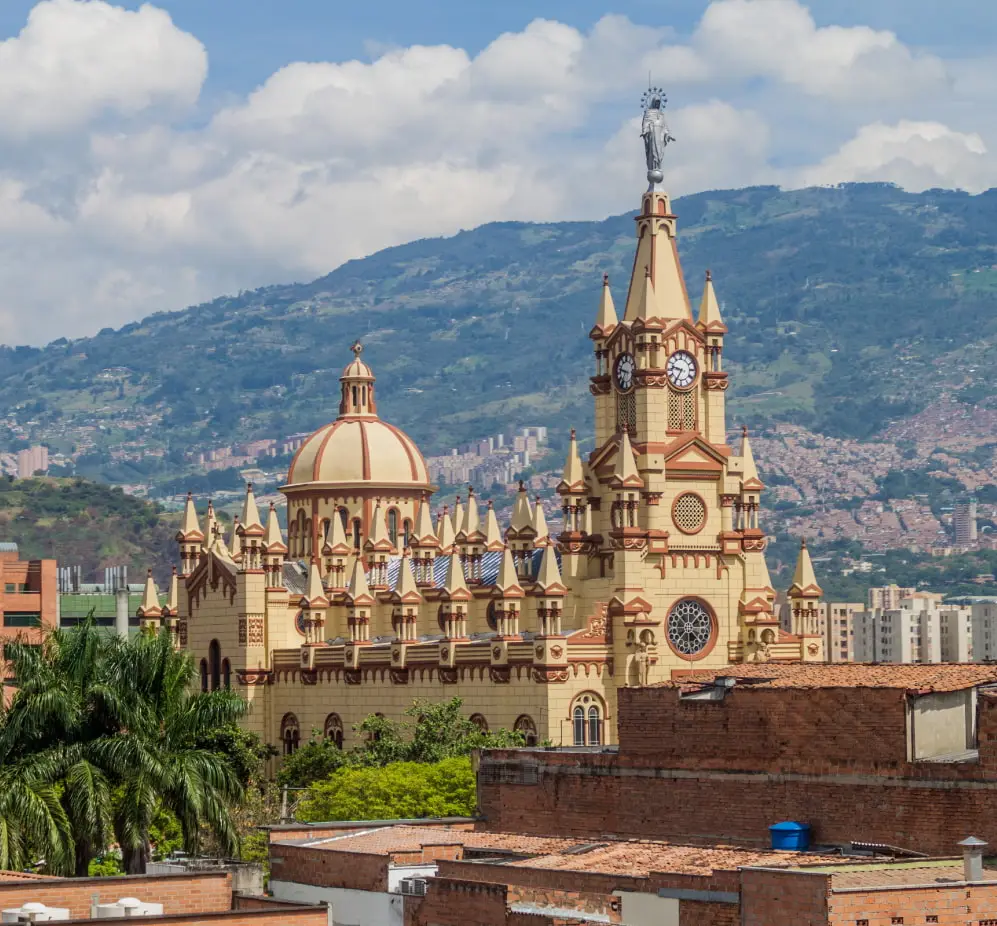
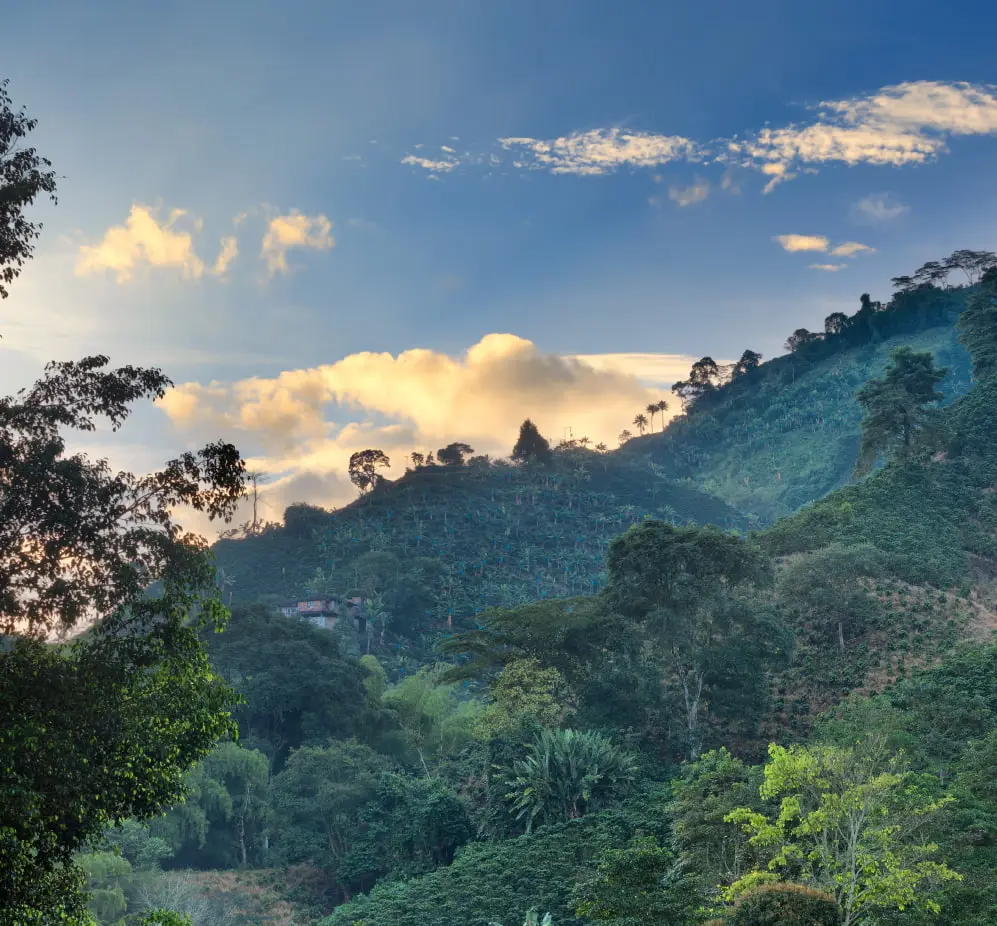
Colombia is known the world over for the quality of its coffee. The process is much more intricate than many visitors can imagine, as beans are carefully picked by hand, and the dedication and care of this largely small-batch production effort pays dividends in the smooth and rich taste of its coffee.
Though Medellin is regarded as the birthplace of coffee in Colombia, the Eje Cafetero or Coffee Triangle is the most well-known coffee-producing region in the country, and a favorite tourist destination for many.
One of the most popular tourist destinations in all Latin America is the coastal city of Cartagena, along the northern shores of Colombia’s Caribbean Coast. The “walled city” features a colorful and vibrant Historic Center—one of the most well preserved in Latin America. The city boasts a plethora of accommodation options ranging from boutique-style hotels in the historic quarter to modern luxurious resorts in the newer parts of the city.
It is conveniently located under 2 hours from Barranquilla by car and just under 4 hours from Santa Marta, which are two very attractive cities with plenty of art, music, culture, and cuisine on offer.
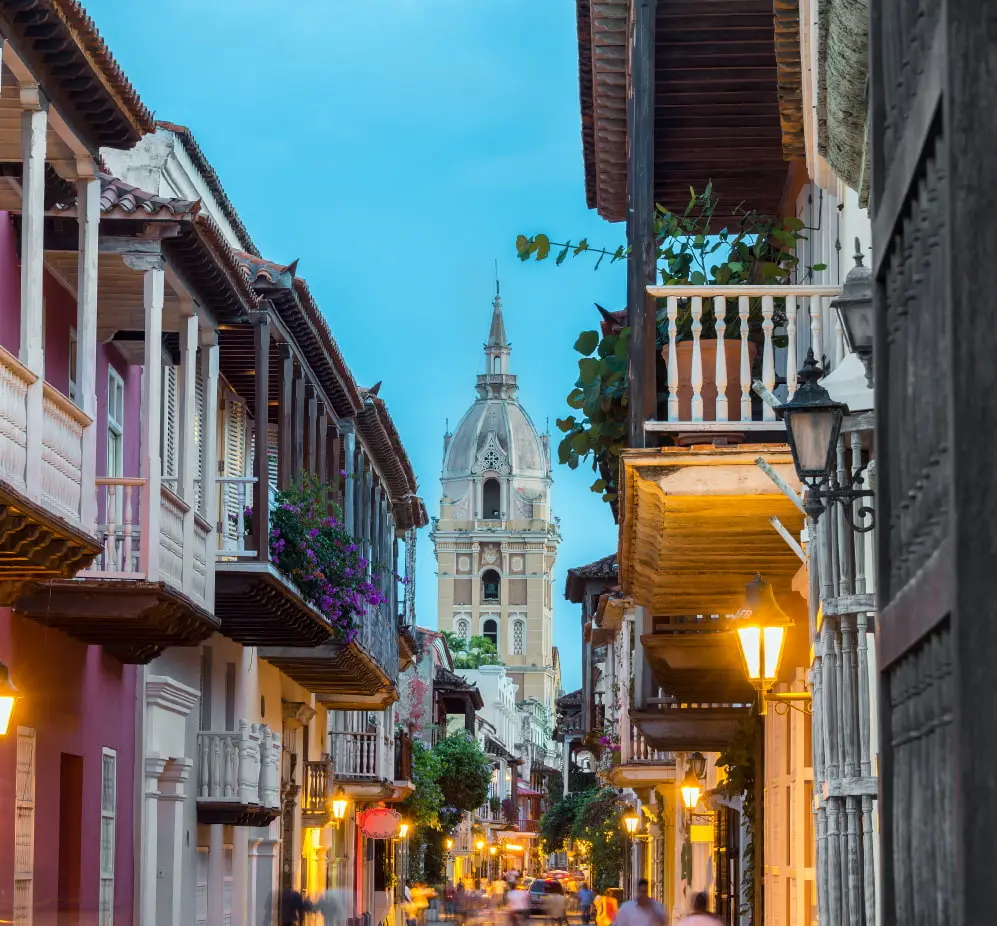
In the Momposina depression, which is a somewhat remote area between the Sierra Nevada and Sierra San Lucas, the Magdalena River (Colombia’s longest) splits into two arms and surrounds a 250 mi² (645 km²) municipality that is preserved in time. This is Mompox, home to one of the most pristine towns in all Colombia—a UNESCO World Heritage Site.
The Colonial-style beauty of Mompox is the setting for their increasingly popular annual Jazz Festival. It is also the backdrop and location for many films, telenovelas, and novels; the most notable of which is Chronicle of a Death Foretold, written by the celebrated author Gabriel Garcia Marquez.
As this is the point where the Andes Mountain range melds into the Caribbean Sea, there are several coves, beaches, mangroves, swamps, and forests that create hundreds of amazing spots to explore and enjoy. Nature enthusiasts and vacationers alike can delight in the tranquility and beauty of this destination. Activities include hiking, snorkeling, diving, and more. It is located just outside of the city of Santa Marta.

Within its namesake National Natural Park, the Sierra Nevada de Santa Marta is a beautiful and majestic peak—the highest point closest to the Caribbean. The significance of this general area is manifold. It is home to the fabled Lost City (Teyuna), constructed and inhabited by the Tairona.
The ruins of the Lost City are older than those of Peru’s Machu Picchu, believed to date back to at least 800 A.D. The site of the Lost City is one of the most important archeological sites in all Colombia

Despite being over 4 hours away from Santa Marta by car, La Guajira peninsula is a very worthwhile place to visit if you enjoy pristine beaches, jaw-dropping sand dunes, and adventure tourism. This region, comprised largely of small fishing villages and a fascinating desert, occupies the northern most tip of both Colombia and South America. It borders the Caribbean and Venezuela. Many inhabitants belong to the Wayuu, a people divided into several clans, that migrate back and forth between Colombia and Panama.

